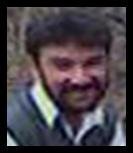|
Image may be NSFW. Clik here to view. 
|
| Badruddin Haqqani. Click to view slide show of the Haqqani Network leaders. |
US officials believe that Badruddin Haqqani, one of the top leaders of the al Qaeda-linked Haqqani Network, may have been killed in a recent US drone strike in North Waziristan.
US officials have told The New York Times that intelligence from the region indicates that Badruddin was killed in one of the five drone strikes that have taken place in the past week. Intelligence officials are attempting to confirm that Badruddin was indeed killed.
Yesterday, US intelligence officials told The Long War Journal that the remotely piloted Predators and Reapers were targeting an "important jihadi leader" in the region, but his name was not disclosed.
The US has launched five drone strikes in Pakistan's Taliban-controlled tribal agency of North Waziristan since Aug. 18. Four of the strikes have taken place in the Shawal Valley, a terrorist haven near the Afghan border, and one more occurred in Miramshah. Badruddin may have been killed in the Aug. 21 strike near Miramshah, which is the traditional area of operations for the Haqqani Network in North Waziristan. However, he may have been traveling in the Shawal Valley to coordinate activities in the area. The Shawal Valley, which is administered by North Waziristan Taliban leader Hafiz Gul Bahadar, is used to train fighters and stage attacks in Afghanistan.
Badruddin is one of the Haqqani Network's most senior leaders. He is thought to serve as the top deputy to Sirajuddin Haqqani, the group's operational commander.
The US State department added Badruddin to the list of Specially Designated Global Terrorists on May 11, 2011. In the designation, State said that he "sits on the Miramshah Shura [council], which has command and control over all Haqqani Network activities, and helps lead insurgents and foreign fighters in attacks against targets in southeastern Afghanistan."
The Miramshah Shura, also known as the Miramshah Regional Military Shura, is one of the Afghan Taliban's four regional commands. The US military and government often use the term "foreign fighters" to describe members of al Qaeda and allied terror groups operating along the Afghan-Pakistani border.
Jason Blazakis, the chief of the State Department's Terrorist Designations Unit, told The Long War Journal that Badruddin does indeed aid al Qaeda operatives in attacking US forces in Afghanistan.
"The foreign fighters supported by Badruddin include al Qaeda fighters," Blazakis said.
State also said that Badruddin is "believed to be in charge of kidnappings for the Haqqani Network." According to State, he "accepted responsibility for keeping New York Times reporter David Rohde hostage." Rohde was captured in November 2008, held in North Waziristan, and escaped in June 2009.
Badruddin was also one of several handlers for the fighters involved in the June 28, 2011 assault on the Intercontinental Hotel in Kabul. Badruddin was recorded while he issued instructions to one of the fighters, and was heard laughing during the attack that killed 11 civilians and two Afghan policemen as well as nine members of the attack team. The attack and the use of Pakistan-based handlers to direct the assault team is similar to at least three other attacks carried out by terror groups in the region, including Mumbai [see LWJ report, Haqqani Network directed Kabul hotel assault by phone from Pakistan].
Badruddin is one of nine Haqqani family members who have been designated by the US as global terrorists; all of them have ties to al Qaeda. His brother, Sirajuddin, is the overall leader of the Haqqani Network as well as the leader of the Miramshah Regional Military Shura. Siraj was designated by the State Department as a terrorist in March 2008; and in March 2009, the State Department put out a bounty of $5 million for information leading to his capture. US intelligence officials have told The Long War Journal that Siraj is a member of al Qaeda's top council.